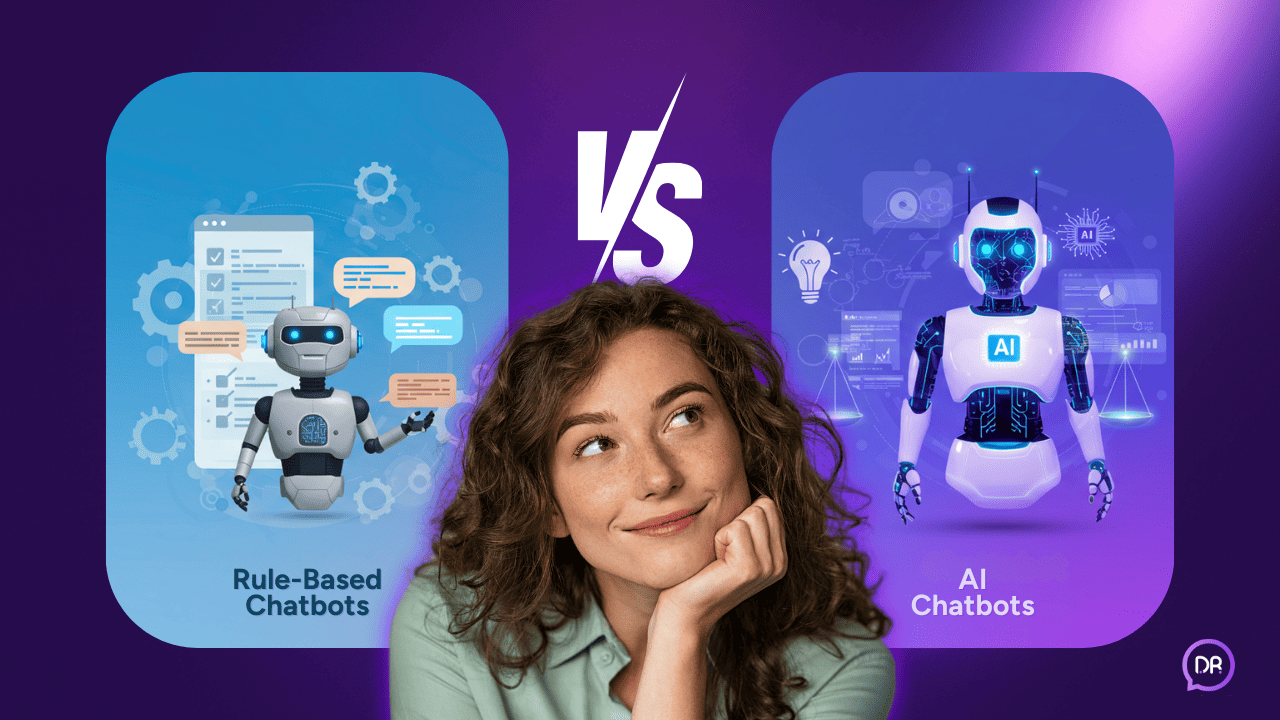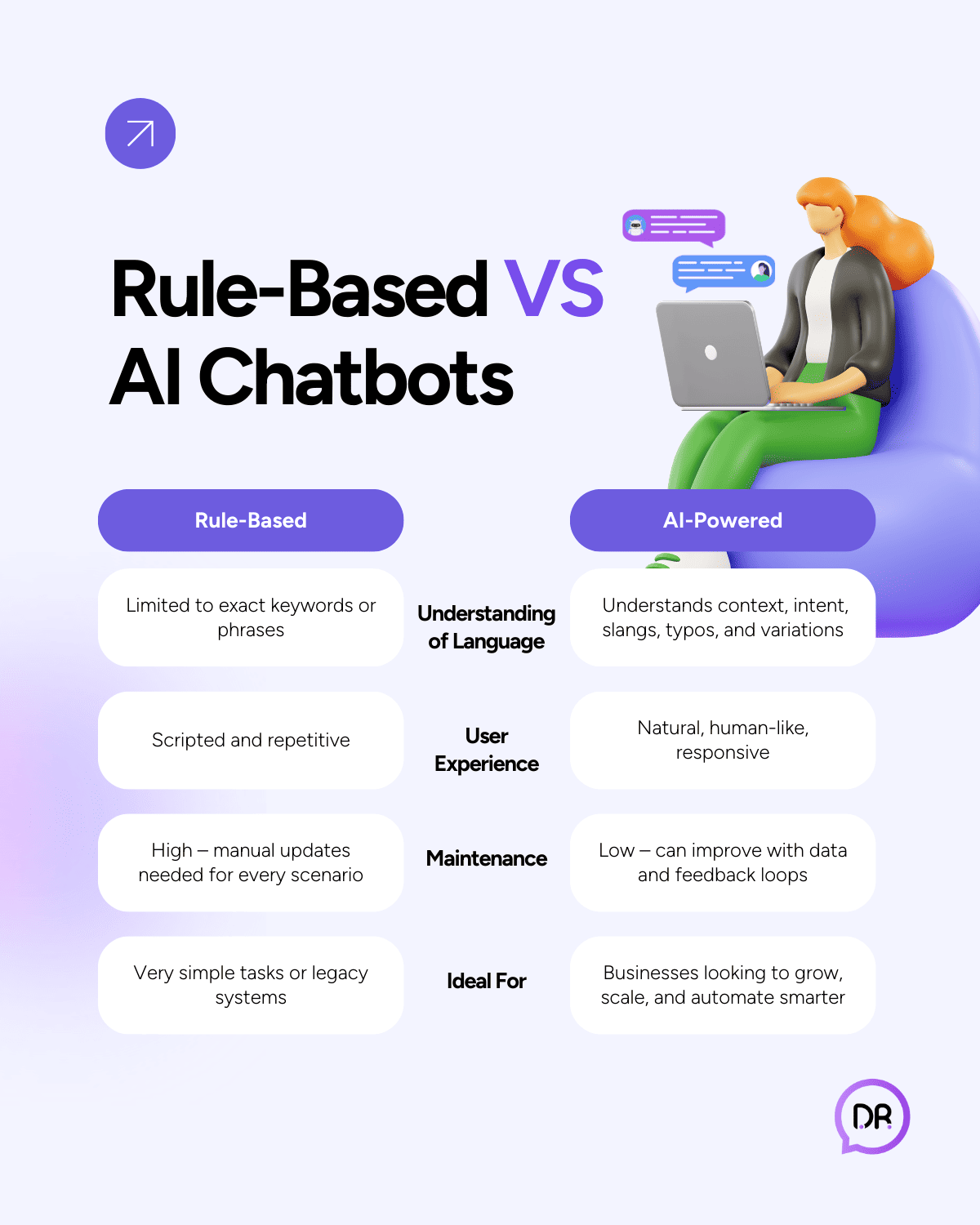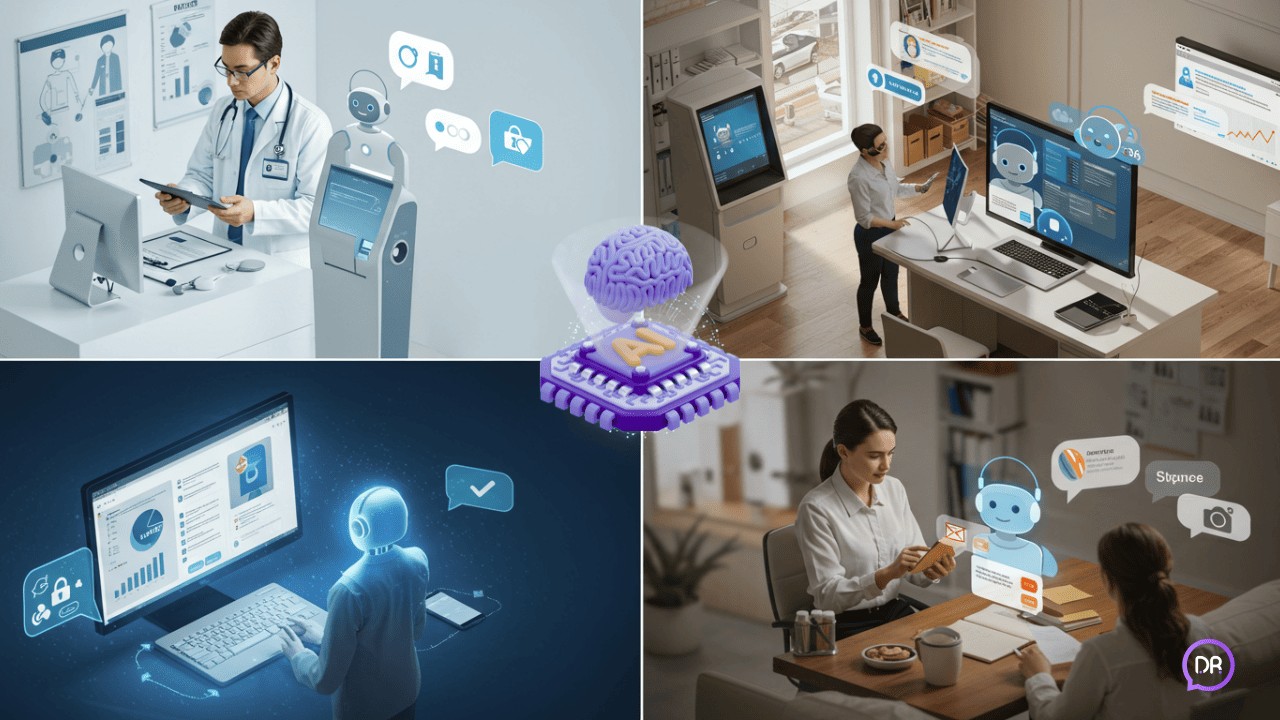TABLE OF CONTENTS
5 June 2025
In today’s fast-evolving digital landscape, chatbots have become an essential tool for businesses looking to engage customers, automate tasks, and generate leads.
Yet many businesses still debate whether to deploy a simple rule‑based bot or invest in an AI‑powered one.
In this guide, we’ll explore these two chatbot types in depth, uncover their strengths and limitations, and their long‑term ROI so you can make an informed, future‑proof choice.
Understanding the Basics: Chatbots in a Nutshell
A chatbot is software that interacts with users through natural language. Its mission can be as simple as sharing opening hours or as complex as diagnosing IT issues.
How the chatbot is built determines what it can and can’t do—and how much value it returns.

Rule-Based Chatbots VS AI Chatbots
Rule-Based (or Scripted) Chatbots operate on pre-defined scripts and decision trees.
They follow specific rules programmed by developers: if a user says “X,” the chatbot replies with “Y.” This approach relies heavily on keyword detection and structured flows to guide the conversation.
For example, if a user types “pricing,” the chatbot pulls up the pricing info page. These chatbots are limited to the scenarios they’ve been explicitly programmed for. Any deviation or unexpected input typically results in dead ends or irrelevant responses.
- Keyword matching – looks for specific words such as price, refund, or booking.
- Decision trees – menu buttons or “if‑then” logic decide the next question or answer.
- Finite vocabulary – anything outside its script triggers a fallback like “Sorry, I didn’t get that.”
In contrast, AI chatbots use advanced machine learning models, particularly large language models (LLMs), to understand context, intent, and nuances in natural language.
AI chatbots can process slang, typos, and ambiguous queries, generating context-aware replies that can adapt on the fly, offering more natural, conversational interactions. They continuously learn and improve from interactions, enabling them to handle complex or unstructured conversations.
- Understands meaning, not just keywords – recognises "I need help with my invoice" even if the word bill isn’t used.
- Generates dynamic responses – crafts answers on the fly using knowledge bases and conversation history.
- Learns over time – improves via user feedback and new data, reducing maintenance overhead.

User Experience: Flexibility and Engagement
- Rule-Based: Users often feel constrained. Conversations can be frustrating if their queries don’t exactly match pre-set keywords. The interaction tends to feel robotic and limited.
- AI-Powered: Users enjoy fluid, more human-like conversations. The chatbot understands subtlety and follows the context seamlessly. It can answer follow-up questions, offer personalised suggestions, and handle multi-turn dialogues effortlessly.
Integration and Scalability: What Businesses Need
- Rule-Based Chatbots: Setting up integrations with other business tools or scaling to new use cases requires manual programming and constant updates. Adding new flows or handling more complex queries can become cumbersome and costly.
- AI Chatbots: These are inherently more scalable. Since AI chatbots understand language contextually, expanding their knowledge base or integrating with CRM, ERP, or other platforms is straightforward. They can handle a broader range of enquiries without extensive reprogramming.
Real-World Use Cases: Who Benefits Most?
- Rule-Based Chatbots can work well for very specific, limited scenarios such as FAQs, simple appointment bookings, or guiding users through a fixed menu.
- AI Chatbots shine in dynamic environments—customer support with varied questions, lead qualification with personalised probing, product recommendations, and multi-channel engagement across websites, messaging apps, and social media.
Business Impact: ROI and Efficiency Gains
- Rule-Based Solutions often require significant upkeep to stay relevant. They risk losing leads due to their limited understanding and inflexible dialogue paths.
- AI Chatbots drive higher conversion rates by engaging visitors naturally and qualifying leads efficiently. They reduce customer support workload by handling complex queries and enable 24/7 availability without compromising quality.

Why AI Chatbots Are the Future
Leading industries—from retail and finance to healthcare—are adopting AI chatbots to deliver personalised, real-time customer experiences.
Rule‑based chatbots still have a place for simple, predictable interactions.
But as customer expectations rise and conversations grow more complex, AI chatbots deliver the flexibility, insight, and scalability businesses need to compete in 2025 and beyond.
If your goals include richer customer engagement, smarter lead generation, or multilingual support, investing in an AI chatbot now will save you time, money, and headaches later.
Ready to Take Your Business Conversations to the Next Level?
Contact us to explore how advanced AI chatbots can elevate your customer experience and bottom line.


